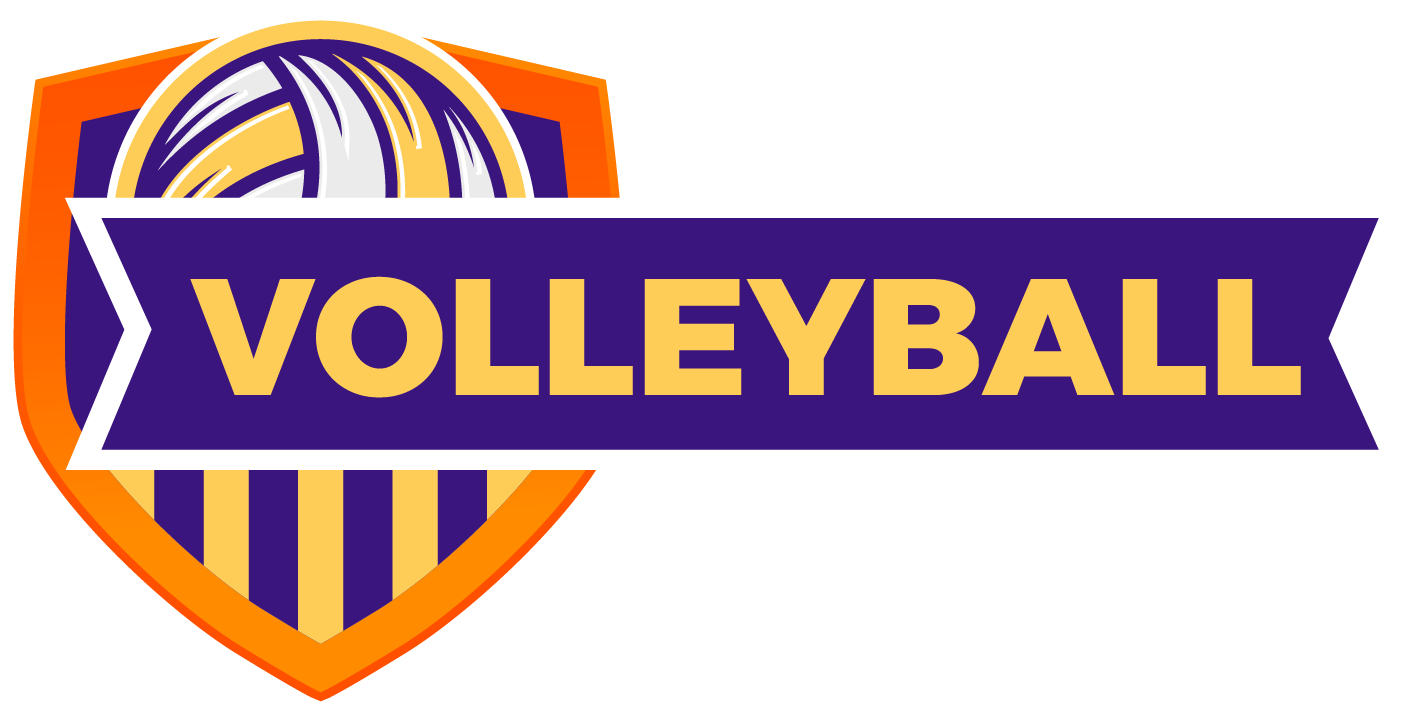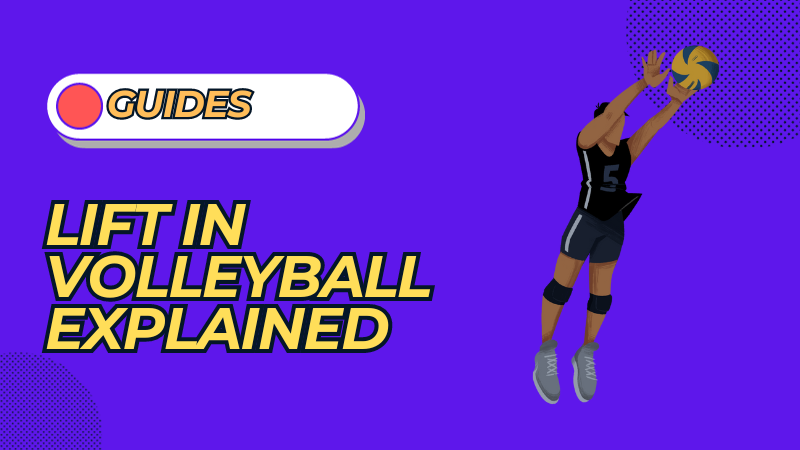Hey, fellow volleyball enthusiasts! If you’ve ever been in the heat of an intense match, you know how critical every point is. But what’s worse than losing a point? Losing one due to a misunderstood or dreaded rule: the lift. Trust me, nothing stings more than seeing that referee’s hand go up to call a lift just when you think you’ve made a great play. It’s like a buzzkill that can mess up your game flow and team’s momentum.
Interestingly, did you know that volleyball became an Olympic sport in 1964? The first tournament was in Tokyo, Japan. As the sport has matured, so have the rules, and one such rule that can cause a bit of a headache is the lift.
So, what exactly is a lift in volleyball? How can you identify it, and most importantly, how can you avoid it? Stick around as we delve into everything you need to know about this perplexing rule, unravel its mysteries, and help you play the game the way it’s meant to be played—lift-free!
What Is a Lift in Volleyball?
In volleyball, a lift is a ball-handling violation that occurs when a player makes prolonged or excessive contact with the ball. This typically results from improper hand positioning or technique and disrupts the game’s natural flow. A lift violation gives the player an unfair advantage by allowing them to control the ball longer than what’s allowed by the volleyball rulebook. When a lift is called, the opposing team is awarded a point.
Now, let’s break it down further. Lifts can occur in-game phases, like setting, passing, or attacking. What makes it tricky is the subjective nature of the call. Referees look at several factors when determining a lift: the duration of contact, ball trajectory, hand or arm movement, and even the ball’s rotation. A lift often involves more contact with the ball than a standard bump, set, or spike.
Understanding what a lift is is not just for the players on the court but also for fans and aspiring volleyball enthusiasts. Knowing this rule inside and out can be your best defense against those frustrating moments when the whistle blows, and you’re left scratching your head. Keep reading, and we’ll explore how to avoid this dreaded violation.
How Do I Know if It Was a Lift?
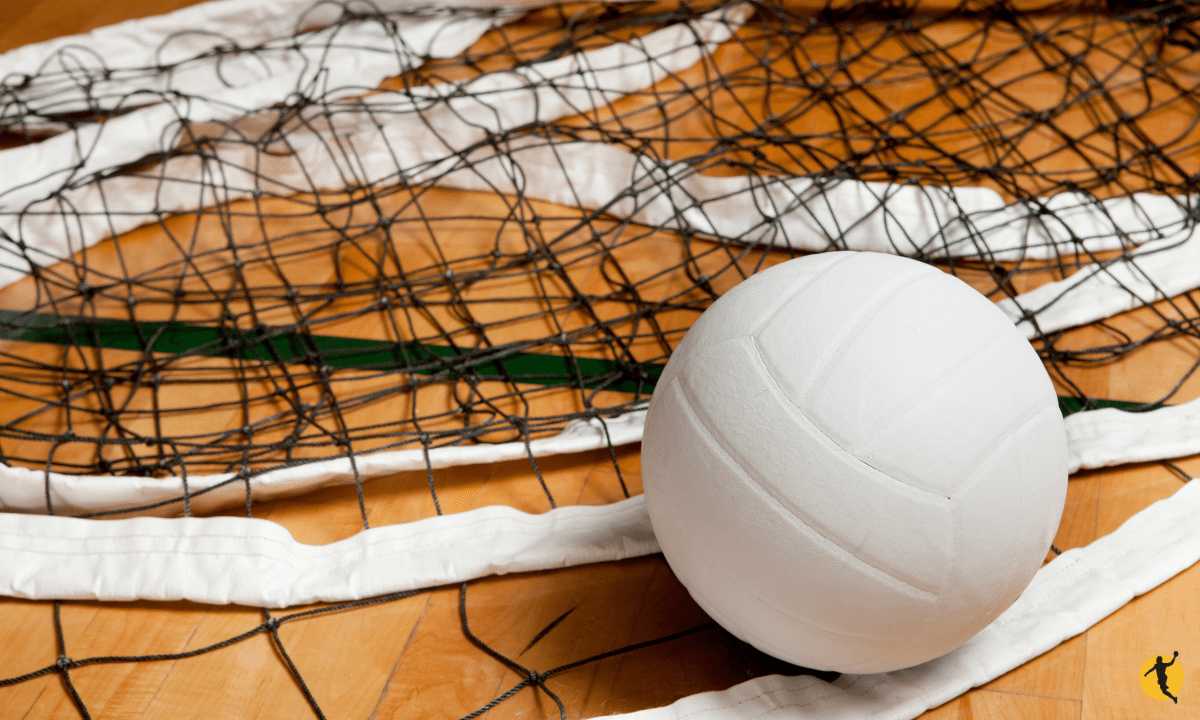
Alright, so you get the gist of what a lift is, but the real question now is, how do you identify one during the chaos of a match? Is it during a pass, a set, or maybe while attacking? Don’t worry; we’re about to get into the nitty-gritty of identifying a lift during different game phases.
Passing the Lift Call
When passing the ball, the risk of a lift usually comes into play if you’re using your platform—the part of your arms from your wrists to your elbows. Lift calls here are often seen among beginners who struggle with proper passing form. The key to avoiding a lift during passing is to propel the ball with your legs and make sure the ball doesn’t rest in your elbows.
Setting up a Lift Call
Now, the setting is where lifts frequently occur. Whether you’re a seasoned setter or someone stepping in temporarily, the lift often rears its head when the fingers aren’t correctly positioned. Here, prolonged contact with the ball is a red flag. The referees look for clean, quick contact that allows the ball to be guided rather than carried.
Hitting the Lift Call (Attacking)
During attacks, lifts are less common but still possible. According to FIVB rules, you can’t catch or throw the ball while attacking; it has to be a clean hit. Lifts during an attack usually happen when a player tries to guide the ball over the net with their fingers rather than hitting it cleanly with a flat hand.
By understanding how a lift is identified in these different phases, you’re equipping yourself with valuable knowledge that can save crucial points in a match.
What Happens When a Lift Is Called?
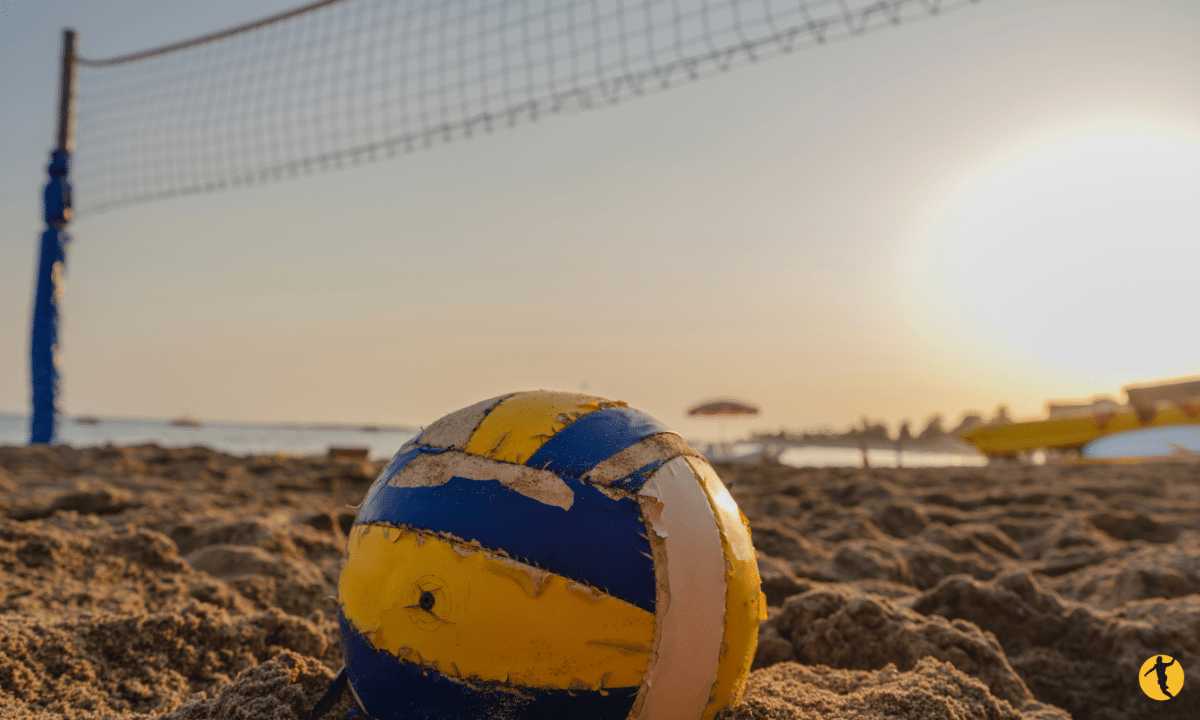
Now that we’ve delved into what a lift is and how to identify one. Let’s get into the nitty-gritty of what happens when a lift is called during a volleyball match. Trust me, the consequences are more than just a momentary pause in the game. This section covers everything from referees’ rules to the most common offenders.
Lifting Rules in Volleyball
When a lift is called, the opposing team is awarded a point. Referees rely on the FIVB rulebook, which states that lifts disrupt the game flow and provide an unfair advantage. A lift call is not just a whimsical decision; it’s grounded in established rules that aim to maintain the game’s integrity.
Which Players Can Commit Lift Violations?
All players on the court can potentially be called for a lift, but you’ll find that young setters are often the usual suspects. Because setting involves delicate finger motion and precise ball contact, they are more prone to lifts, especially if they’re still honing their technique.
Also, Read: When Does Volleyball Season Start? Full Guide
Attackers Violating the Lift
Attackers can also find themselves on the wrong end of a lift call. This typically happens when they try to guide the ball with their fingers instead of using a flat hand, which would be the correct technique for an attack hit. In the eyes of a referee, this prolonged contact becomes a lift violation.
Diggers Violating the Lift Code
Diggers are not immune to lifts, either. If a player holds the ball too long during a dig, the referee can call it a lift. Like with other roles, the key is to make quick, clean contact with the ball.
Lift Violation by Passers
Passers may find themselves called for a lift if they make prolonged or excessive contact with the ball during their pass. Maintaining a proper passing form and using the legs to propel the ball is important, avoiding any resting points that could be considered a lift.
Lift Violation by Setters (Most Common)
As mentioned, setters are the most common offenders regarding lifts. The setter’s role in controlling and directing the ball makes them especially susceptible to this violation. A lift is often called if they have improper hand positioning or technique, resulting in prolonged contact with the ball.
And there you have it, a comprehensive look at what happens when a lift is called in volleyball, along with the rules and the players most likely to commit this violation.
How Do I Avoid Lifting in Volleyball?
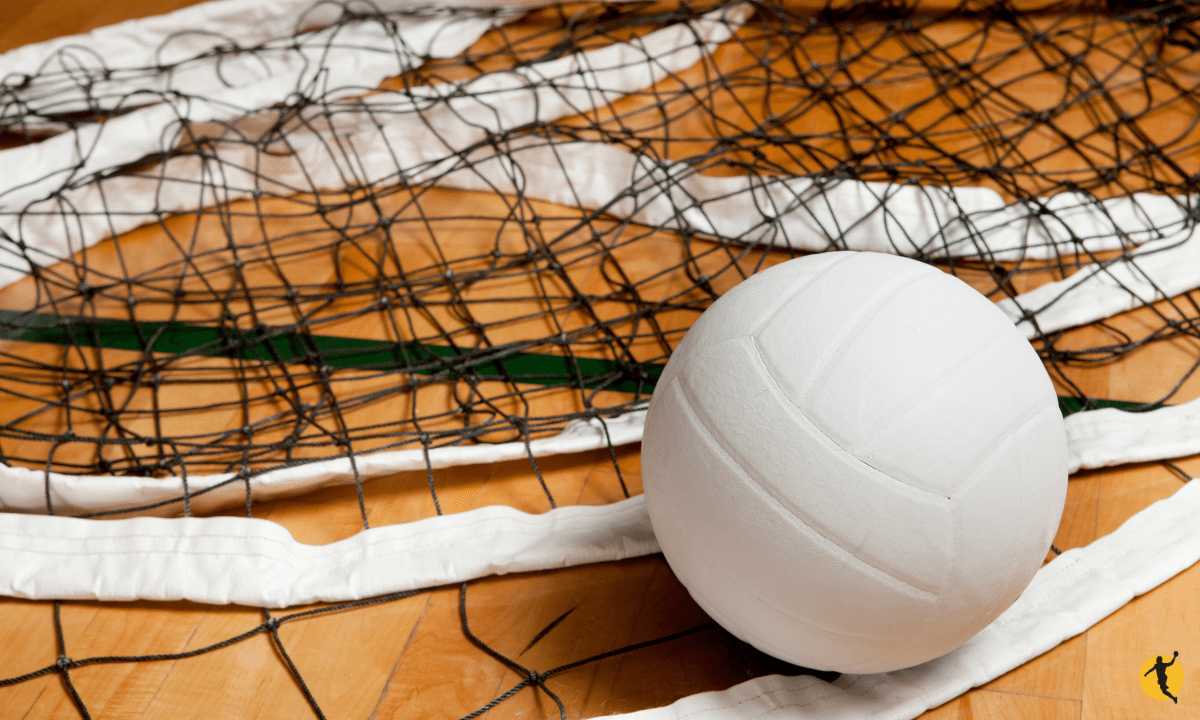
Alright, let’s switch gears and talk prevention. We’ve discussed a lift, how to identify it, and the players most likely to commit this pesky violation. Now, let’s delve into some practical advice on how to avoid lifts in the first place. Trust me, a little know-how goes a long way in keeping your game clean.
The Momentary Contact
The essence of avoiding a lift lies in how you make contact with the ball. In volleyball, momentary contact is key. Avoid cradling or holding the ball; instead, aim for a quick, clean touch. Practicing your hand positioning and striking can significantly reduce the risk of being called for a lift.
When Hitting Underhand, Use a Closed Fist
Hitting the ball underhand often puts players at risk for a lift call. To steer clear of this, use a closed fist for underhand hits. Doing so eliminates the possibility of the ball lingering in your hand, which usually leads to a lift violation.
Use the Heel of Your Hand to Hit
If you’re looking to avoid a lift during spikes or serves, using the heel of your hand can be a game-changer. This technique ensures brief contact with the ball, reducing the chances of a dreaded lift call. Plus, the heel provides the power and precision needed to effectively send that ball over the net.
By mastering these techniques, you’re not just improving your own skill set—you’re also making the game more enjoyable and fair for everyone involved. So implement these tips, and let your game soar lift-free!
Also, Read: How Many Players Are on a Volleyball Court?
If Lift Rules Aren’t Present, What Will Happen?
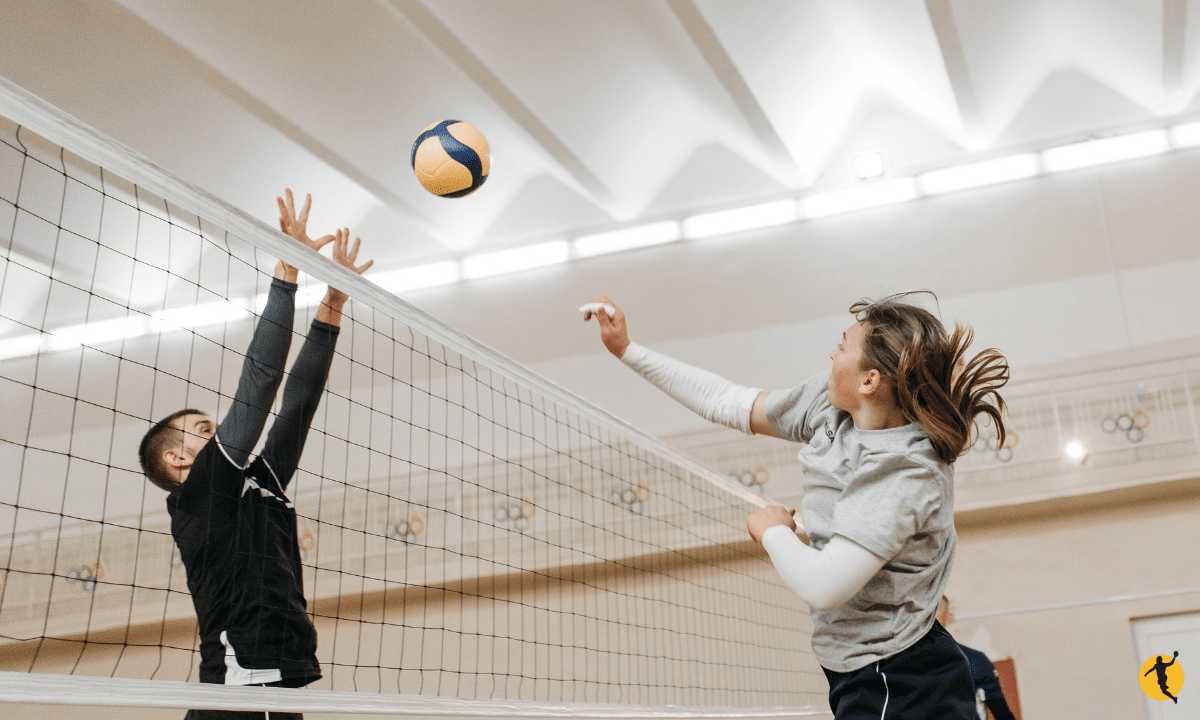
What happens if lift rules need to be clearly defined or enforced in a volleyball game? You’re setting the stage for confusion, inconsistent gameplay, and potentially heated arguments. Let’s dive into this hypothetical scenario.
The Game Becomes Inconsistent
With established lift rules, the game can quickly become a mess of consistency. Each player may have their understanding of what constitutes a lift, leading to a haphazard style of play. The game’s flow would be disrupted as players become unsure about what is and isn’t allowed.
Players Gain Unfair Advantages
Without clear rules about lifting, some players might exploit the situation to gain an unfair advantage. By intentionally using lifts as part of their strategy, these players distort the essence of the game, undermining its integrity and fair play.
Confusion and Conflict Arise
Imagine you’re in a high-tension match, and a critical point is scored through what you perceive as a lift. Without established rules, debates and arguments can break out, souring the atmosphere and potentially causing conflict among teammates or opposing teams.
Also, Read: How to Bump a Volleyball: Essential Guide by Volleyball Expert
The Spectacle Suffers
Volleyball is not just a sport; it’s a spectacle for the viewers. The game becomes less enjoyable for fans and participants when it is rife with unclear rules and contentious plays. A streamlined rulebook, complete with lift regulations, enhances the overall experience for everyone involved.
In summary, the absence of lift rules would destabilize the game. It’s essential to have clear, well-understood regulations to ensure that volleyball remains a game of skill, strategy, and, most importantly, fair competition.
What’s the Difference Between a Lift and a Carry?
The terms “lift” and “carry” are often used interchangeably in volleyball, but they have distinct meanings that can affect gameplay. Let’s dissect the differences so you can be clear the next time you step on the court or analyze a match.
The Lift: Prolonged Contact
In volleyball, a lift occurs when a player makes prolonged contact with the ball, typically using an open palm. The ball momentarily “sticks” to the hand or hands before being released. Lifts are commonly called during setting or passing, although they can happen in other play situations. The rule of thumb is if it looks like you cradled or scooped the ball, it’s probably a lift.
The Carry: Forward Momentum
A carry is slightly different. It involves catching the ball and throwing it, all in one motion. This means the player momentarily holds the ball, changing its direction or giving it additional momentum with a noticeable pause or motion. Carries often occur during attacks or other hits where the player tries to guide the ball rather than striking it cleanly.
Why It Matters: The Gameplay Impact
Understanding the difference between a lift and a carry is crucial for players and referees alike. Incorrectly calling a lift when it’s a carry, or vice versa, can change the outcome of a rally or even an entire match. Both are violations, but the specific circumstances under which each occurs can be different, affecting how players and referees respond.
While both lifts and carries involve illegal hits in volleyball, they differ in the type of contact made with the ball and the subsequent action. Knowing these nuances makes you a more informed player and enriches your understanding and appreciation of this complex, dynamic sport.
Also, Read: How to Score and Win with Basic Volleyball Rules
Conclusion
Navigating the intricacies of lifts and carries in volleyball can take time and effort, even for seasoned players. We’ve broken down what constitutes a lift, pinpointed moments in the game where a lift is most likely to be called, and even shared tips on how to avoid this dreaded violation. The aim is to give you an in-depth understanding so that you can play or enjoy the game more responsibly.
Remember, a lift involves prolonged contact with the ball, usually during setting or passing. A carry involves momentarily holding the ball and directing its path. Both are violations that can significantly impact the outcome of a game.
Understanding these nuances is crucial whether you’re a player on the court or a fan watching from the sidelines. It helps you appreciate the skill involved and equips you with the knowledge to understand key moments in any match. So, the next time you hear a lift or carry called, you’ll know exactly what it means and why it matters.
FAQs
Can You Lift on the First Hit in Volleyball?
No, you cannot lift on any hit in volleyball, including the first hit. A lift is considered an illegal action across the board, regardless of when it occurs in the sequence of play.
Is Lifting the Ball in Volleyball a Violation?
Yes, lifting the ball in volleyball is a violation. It’s considered illegal contact with the ball because it disrupts the game flow and gives players an unfair advantage over their opponents. Referees are trained to spot lifts and will call them out to ensure the game remains fair and engaging.
Can You Lift on a Serve in Volleyball?
Like with other hits, you cannot lift on a serve in volleyball. The rules are consistent throughout the game to maintain a level playing field and to promote skilled play over advantageous misconduct.
How Do You Stop Lifting in Volleyball?
To avoid lift calls in volleyball, players should focus on proper technique and hand positioning when making contact with the ball. Fine-tuning your defensive posture, passing platforms, and setting hand placement can prevent most lift violations. Additionally, strength training can be beneficial; it helps prevent movements made out of weakness that often result in a lift. So, practice, precision, and strength are your best defenses against being called for this violation.
